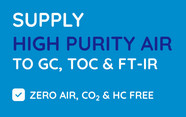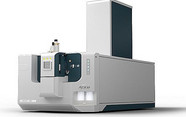Pesticide Target Screening with GC-APCI coupled to high-resolution QTOF-MS

contributed by Bruker |
Introduction
Pesticides are frequently found as contaminations in food and environmental matrices. They commonly are analyzed by GC-MS or LC-MS. Both are complementary, “orthogonal” methods, comprising in total >1100 known pesticides. While they overlap in scope, each method alone covers exclusively a certain range of pesticides: GC-MS is more common for semi-volatile compounds, LC-MS is favorable for polar and thermo-labile pesticides. Full scan accurate mass screening with atmospheric pressure inlet LC-MS has become increasingly popular in recent years. It is able to cover hundreds of target compounds in a single run and additionally enables the identification of unknowns and retrospective analysis. Target compounds are identified by their retention time, mass accuracy and isotope pattern. Reliability of identification is improved by using diagnostic ions generated by broadband CID alternating with full scan data acquisition. Diagnostic ions are valuable in complex matrices as they support the differentiation of target analytes signals from the matrix background.
Log in or register to read this article in full and gain access to The Analytical Scientist’s entire content archive. It’s FREE!

















